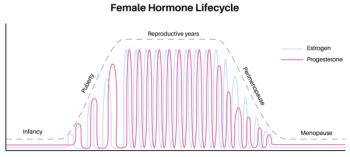
Johann Gudjonsson, MD, PhD: Role of OX-40 Pathway in Atopic Dermatitis Pathogenesis

Johann Gudjonsson, MD, discusses how OX-40/OX-40L signaling drives immune activation in AD and its emerging role as a genetic and therapeutic target.
At the 2025 Revolutionizing Atopic Dermatitis (RAD) meeting, in Nashville, TN, Johann Gudjonsson, MD, PhD, delivered a focused presentation on the OX-40/OX-40L signaling axis and its role in the pathogenesis of atopic dermatitis (AD). In an interview with Patient Care while on-site at the conference, Gudjonsson broke down the biology behind the pathway, explaining how it functions as a key link between dendritic cells and T cells to amplify inflammatory responses. He also discussed the genetic variants that may predispose individuals to AD and how these findings are shaping our understanding of disease mechanisms and potential therapeutic targets. Watch the video above for details.
Johann Gudjonsson, MD, PhD, is the Arthur C Curtis professor of skin molecular immunology, professor of dermatology, and professor of internal medicine and research at the University of Michigan in Ann Arbor.
The following transcript has been edited for clarity, style, and length.
Patient Care: To start off, could you explain the focus of your presentation at RAD 2025?
Johann Gudjonsson, MD, PhD: Sure. My presentation focused on the OX-40/OX-40 ligand (OX-40L) signaling axis and its role in the biology and immunology of atopic dermatitis. I discussed how this pathway functions as a co-stimulatory signal between dendritic cells and T cells, driving immune activation and downstream cytokine release. I also highlighted the genetic component—specifically, how certain variants in this axis can increase susceptibility to atopic dermatitis and promote inflammation.
Patient Care: How does the OX-40 pathway play a central role in the pathogenesis of atopic dermatitis?
Gudjonsson: One of the most compelling pieces of evidence is its genetic link to the disease. We’ve identified variants in the OX-40/OX-40L axis that likely increase pathway activity, predisposing individuals to atopic dermatitis. Beyond genetics, we see significantly elevated expression of both the ligand and receptor in atopic dermatitis lesions, and importantly, they’re located in the same regions of the skin—suggesting direct interaction. This axis mediates communication between antigen-presenting dendritic cells and T cells, making it a critical component of the immunologic circuitry driving disease pathogenesis.
Newsletter
Enhance your clinical practice with the Patient Care newsletter, offering the latest evidence-based guidelines, diagnostic insights, and treatment strategies for primary care physicians.

























































































































































































































































































